
A Family Affair
Quartz, Quartz, Quartz. Probably one of the most popular family of gemstones ever found. Ever heard of: Amethyst? Citrine? Lemon Quartz? Smoky Quartz… Jasper? Well, here’s a tiny surprise for you. Yes you may have guessed it they are all quartz. In fact, by definition Quartz is a chemical compound of silicon and oxygen, silicon dioxide SiO2. You may have heard this chemical formula in your days in high school; it is the same chemical formula as sand: the same sand which covers our beaches and the same sand which is used to make beautiful pieces of glassware.
Therefore, it is just simply impossible to cover one such large topic in one article. Hence, we have split the Quartz Family into their gemological identities of Crystalline and Cryptocrystalline. Furthermore, we split it further into the different varieties of each family. Thus, In this article we will dissect and examine one of the more popular Quartz: Amethyst.
A Brief Origin of the Amethyst
Amethyst dates back to the times of Ancient Greece, where mythology predicated origin. The origin of Amethyst has different versions, however the summarisation is the same. Amethyst was said to be a young woman, accidentally caught in the wrath of the Greek God of Wine, Dionysus. When Amethyst called for help, the Goddess Diana came and turned the girl to a white gemstone(allegedly quartz). Once sober, Dionysius, extremely remorseful, wept into his half full goblet of wine, which overflowed and dyed the quartz purple. Thus is the story of how Amethyst came to be. The lore is not just a mere story. Spiritualists believe the amethyst is the gemstone helping the drunk become sober. The amethyst is also the gemstone helping the sober not become drunk. (Do Not Attempt).
Amethyst Demi-Parure Jewellery from Catherine the Great of Russia
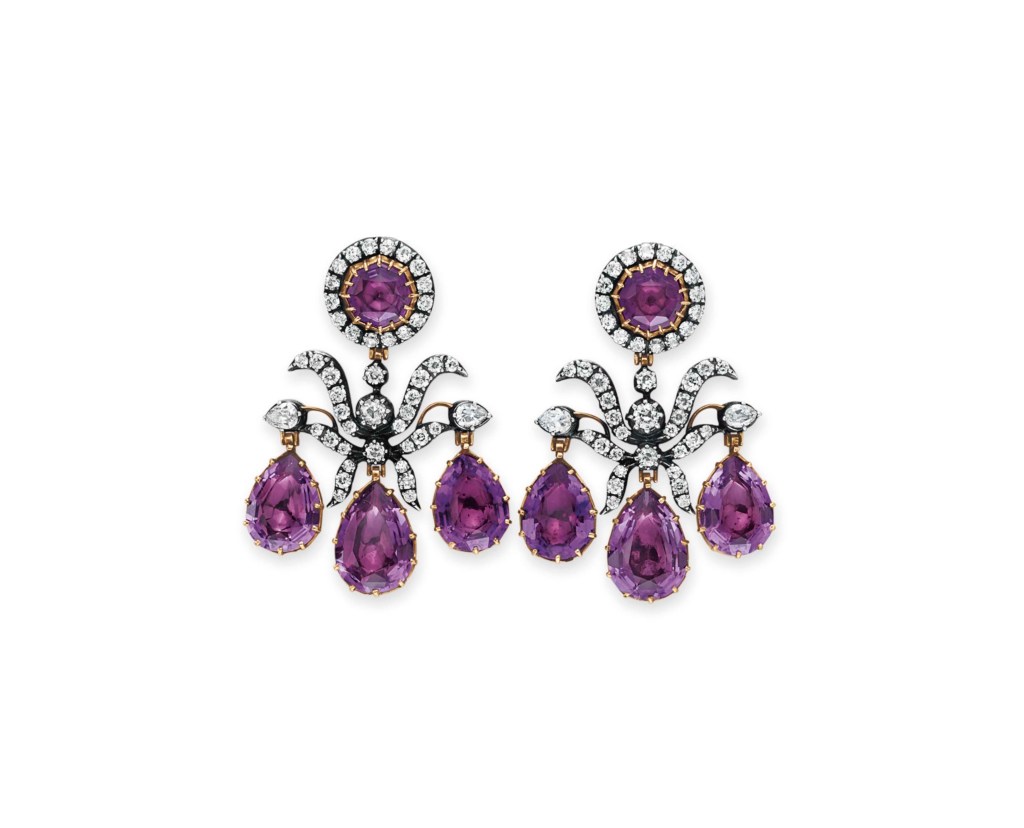
Source: Christie’s
Further along history, Amethyst was the personal favourite of Queen Catherine the Great of Russia. She sent multiple expeditions to the Ural mountains in search of the purple stone which she fell in love with. The Empress had a Demi-Parure style of jewellery. It consists of two stylish earrings and a necklace, all containing amethysts in various shapes and sizes. She had at least two pairs of Girandole earrings made, originally in the Romanovs jewel fund. Afterwards it was set on auction at Christie’s in London in 1927.
The Kent Parure from the British Crown Jewels
In addition, a jewellery set of Amethysts, known officially as the Crown Amethyst Suite of Jewels or the The Kent Amethysts, are a prominent feature of British Crown Jewels. The origin of these stunning pieces of jewellery were handed down from the mother of Queen Victoria(great-great-great-grandmother of Queen Elizabeth II) the Duchess of Kent. After the death of her mother, Queen Victoria allocated the stunning pieces of jewellery as part of the heirlooms of the crown.
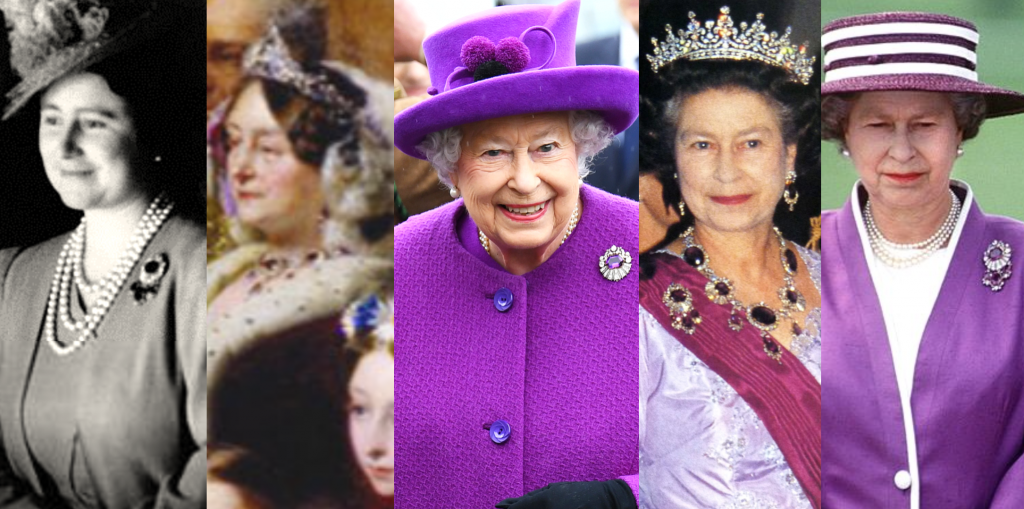
Source: The Royal Watcher
The Colour of the Amethyst
The Amethyst has one primary body colour: purple. Despite this, they can display different tones and saturations: from a dull light purple to a vivid deep purple. The colour concentration of the Amethyst arises from the phenomenon of colour centres in quartz. When a trace element (Iron), is irradiated by natural radiation from the Earth, a colour centre is made. In addition, the different degrees of radiation creates the aforementioned variations in tones and saturations. Once again, gemstones from different localities produce different quality, tones and saturations of colour, with the best vivid purple colour originating from Siberia, Sri Lanka and Brazil. Also, in true Lux Gemstones fashion, we present to you a colour gradient charactering some of the different tones and saturations of the amethyst.

Just like morganite(in one of our previous publications, which you are free to have a read of), the Purple Quartz variety can and do fade in colour when overexposed to light.
What is Ametrine?
In the world of gemstones, there are many weird and wonderful entities, and ametrine is one of them. You may have seen a beautiful gemstone which looks like an Amethyst but has a mixture of yellow and orange like that of a citrine. Well the gemstone synonymous with the monster that Dr Frankenstein built, is the ametrine, with a mixture of the two aforementioned stones. This is caused by the different oxidations of Iron in the quartz crystal… something which we won’t dwell much further into.
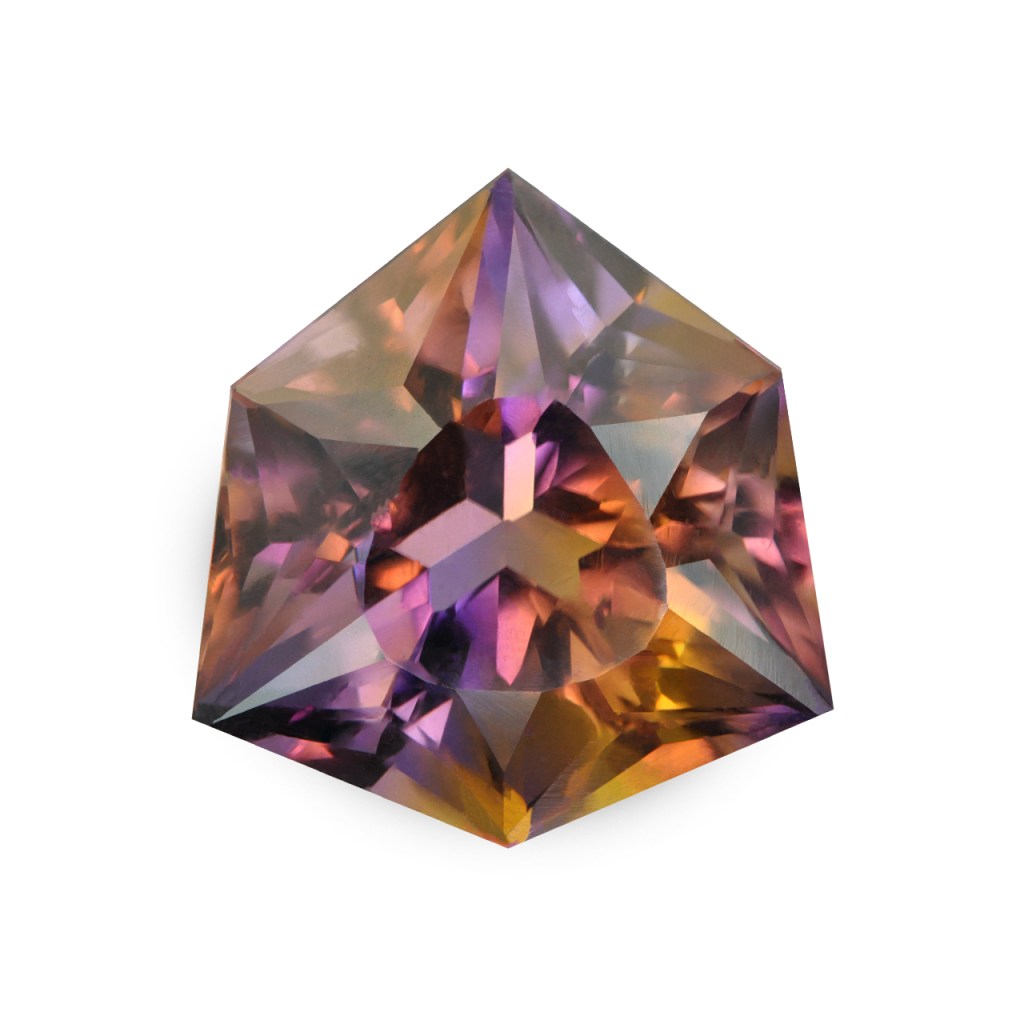
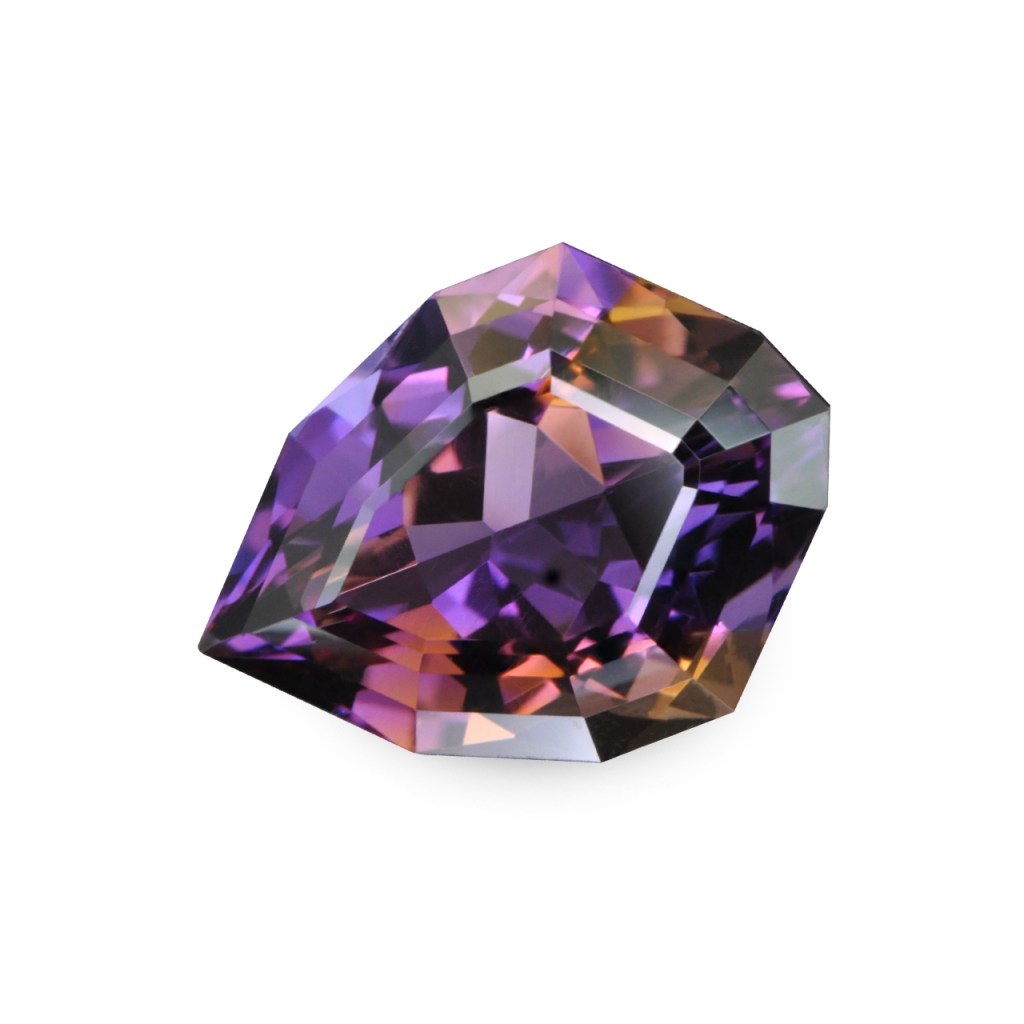

Synthetics
Just like any gemstone in the world, rarity and demand drives market and price. Market and Price drives greed and envy. When people cannot afford to go to the gemstone market or meet the price, they resort to the next legal option of synthetics.
Synthetic Amethyst has the same physical and chemical properties as its natural counterpart, with a close to/ almost similar replication of colour and beauty. However, there is one main factor which differentiates the two: twinning. Twinning is described as: “the occurrence or formation of twinned crystals.” (Google). The synthetic process which forms the purple stone disallows the creation on twinning, therefore a gemologist is able to distinguish between them by observing the crystal form of a stone.
The Gemstone Market
Amethyst in the gemstone market is relatively cheap, compared to that of a sapphire or ruby. This is mainly due to the high availability of the stone from a variety of localities around the world. Furthermore larger pieces of amethysts are available in the gemstone market, allowing for once again a reduction in the market price. You can now go and have a look at some of our beautiful Amethysts which we have to offer in the shop.
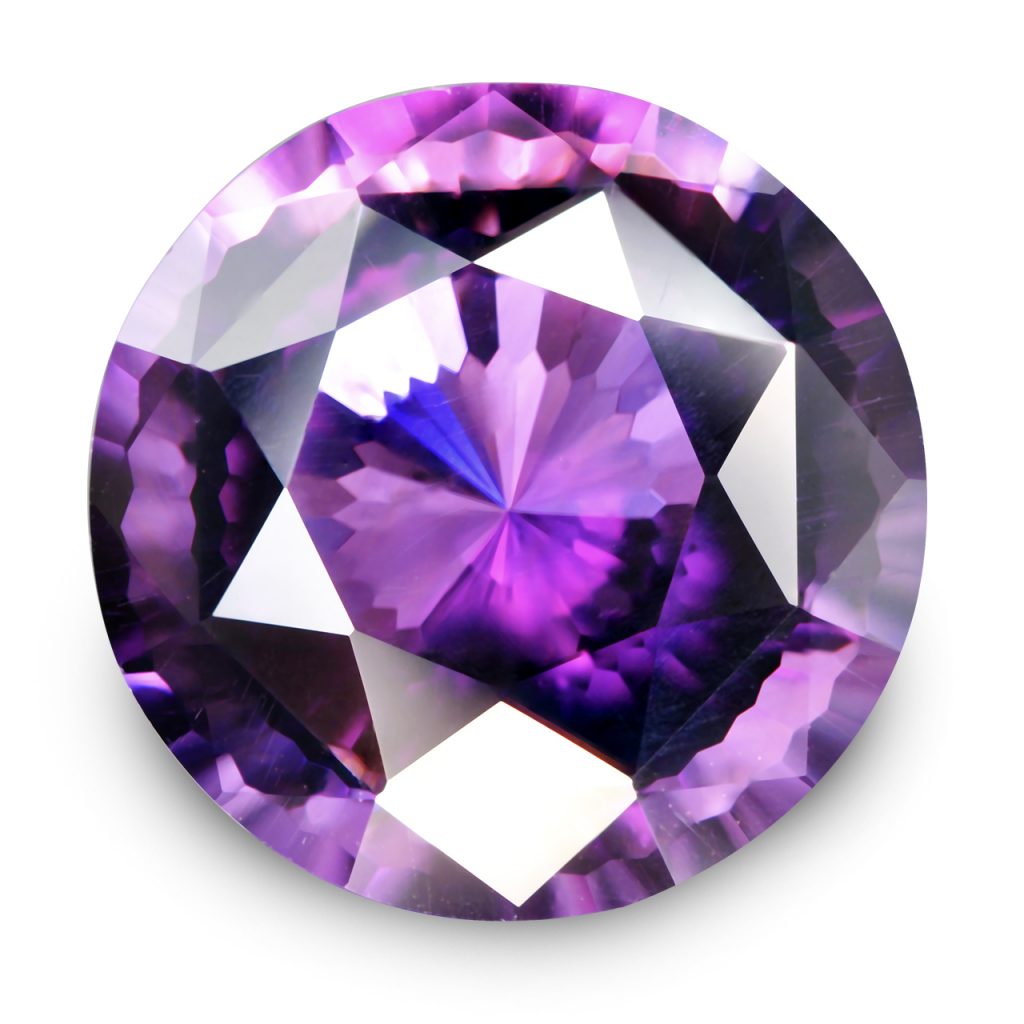
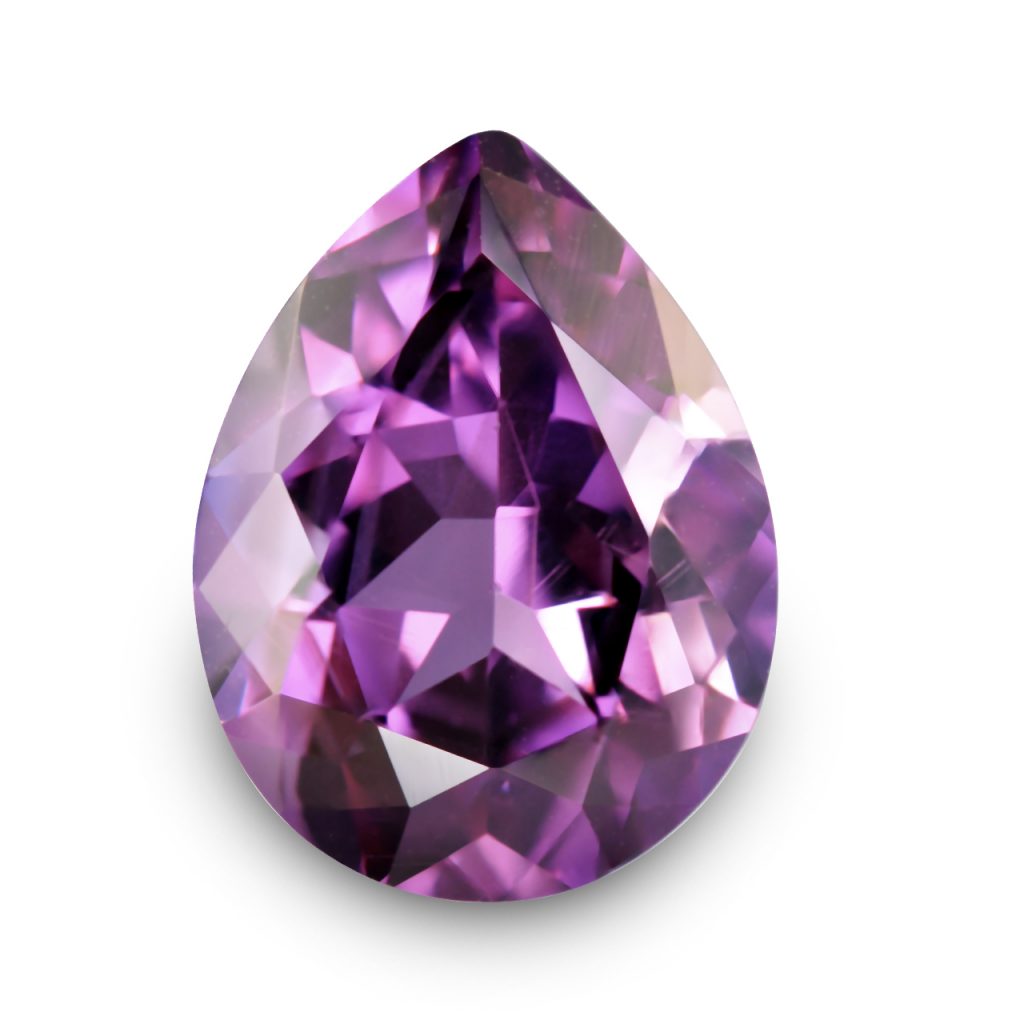




Conclusion
In Conclusion, Amethyst is a beautiful variety of gemstones in the quartz gemstone family, which has been worn and adorned for generations of kings and queens. It’s purple colour is sought after by all and its high availability around the world allows it to be the perfect gemstone for a night at that cocktail party that you have been planning to go to.
References:
A Pair of Amethyst and Diamond Ear Pendants 2012, Photograph, Christies, viewed 27 December 2019, <https://www.christies.com/img/LotImages/2012/NYR/2012_NYR_02589_0116_000(a_pair_of_amethyst_and_diamond_ear_pendants).jpg>.
Amethyst Meaning, Powers and History 2019, JewelsForMe, viewed 27 December 2019, <https://www.jewelsforme.com/amethyst-meaning>.
The Court Jeweller 2015, ‘The Kent Amethysts’, Blog post, 24 February 2015, viewed 27 December 2019, <http://www.thecourtjeweller.com/2015/02/the-kent-amethysts.html>.
The Kent Parure 2019, Photograph, The Royal Watcher, viewed 27 December 2019, <https://royalwatcherblog.files.wordpress.com/2019/05/8.png>.
What Causes the Purple Color of Amethyst? 2018, GeologyIn, viewed 27 December 2019, <http://www.geologyin.com/2018/05/what-causes-purple-color-of-amethyst.html>.